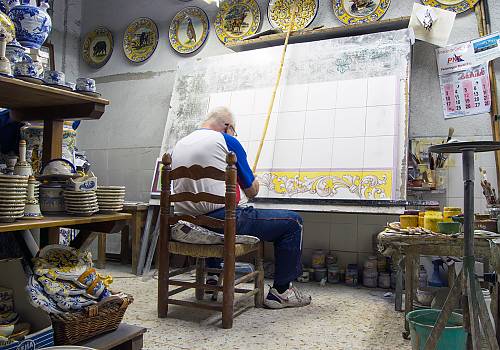Artisanal talavera of Puebla and Tlaxcala (Mexico) and ceramics of Talavera de la Reina and El Puente del Arzobispo (Spain) making process
Inscribed in 2019 (14.COM) on the Representative List of the Intangible Cultural Heritage of Humanity
The processes of making the artisanal talavera of Puebla and Tlaxcala (Mexico) and ceramics of Talavera de la Reina and El Puente del Arzobispo (Spain) are identified with two communities in both Mexico and Spain. The ceramics have domestic, decorative and architectural uses. Despite changes over time and the developments ceramics have undergone in both countries – including due to the use of electric potter’s wheels nowadays – the artisanal making processes, including making techniques, enameling and decoration, retain the same pattern as in the sixteenth century. Related knowledge and skills include preparing the clay, making the earthenware using a potter’s wheel or cast, decorating, preparing enamels and pigments and managing the kiln, which requires great expertise. Some ceramists carry out the whole process, while others specialize in specific tasks. Related knowledge – including raw material extraction, material processing, decoration and firing techniques – is mostly borne by master earthenware artisans and ceramists, who have developed their skills over time and transmit them to the next generations through oral transmission in their artisanal workshops or in the family setting. Every workshop has its own identity, as reflected in the detail of the shapes, decorations, colours and enamels of the pieces, and the production of ceramics remains a key identity symbol in both countries.










